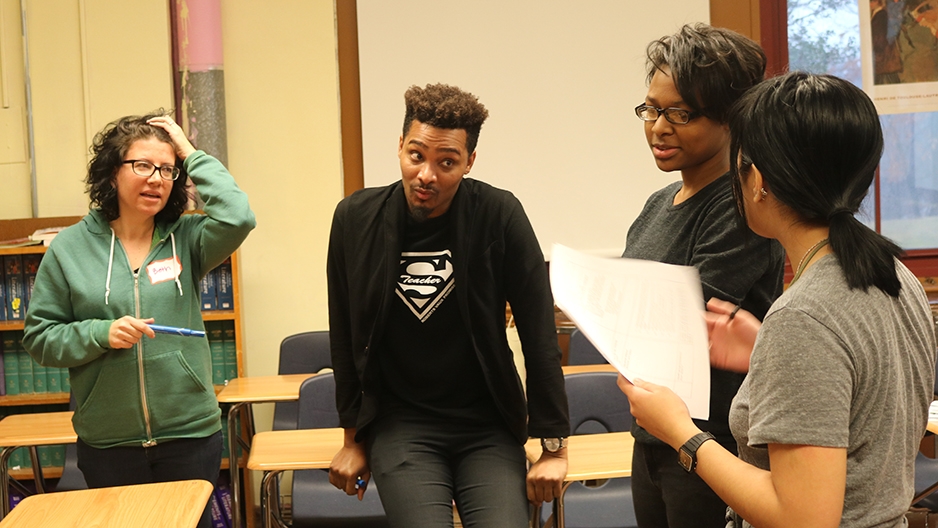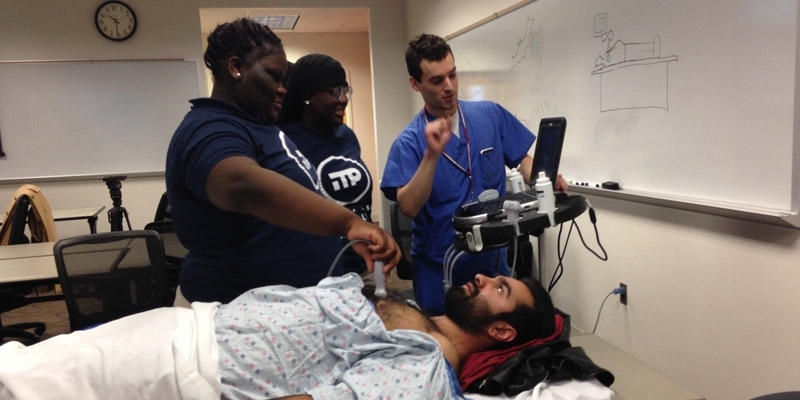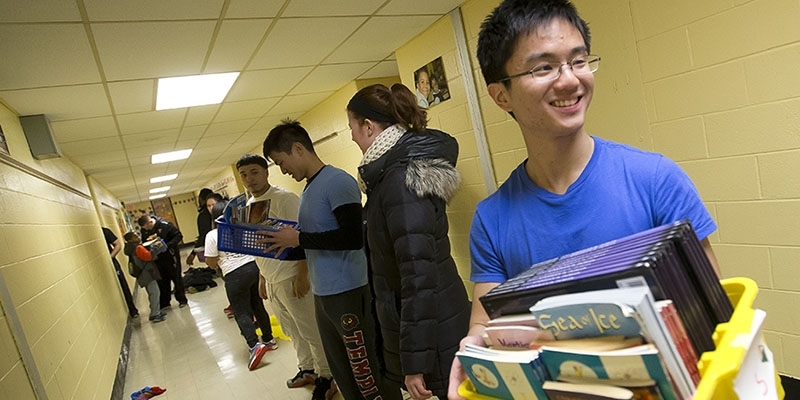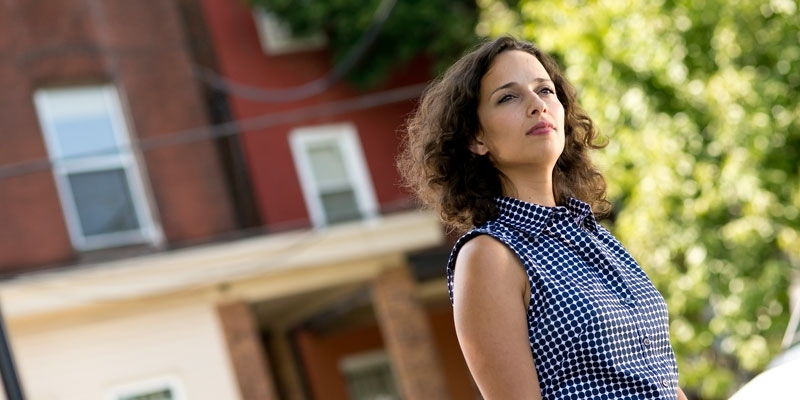To combat identity erasure, students teach the teachers
A cohort of student interns at Temple’s University Community Collaborative aim to make public schools more inclusive.

A Temple program is helping high school teachers better understand student identities by flipping their roles and giving students the opportunity to be at the head of the classroom.
In early January, a group of seven current and former Philadelphia high school students took to Central High School to share a lesson for teachers about how identity erasure can, and often does, infiltrate the educational atmosphere of public schools—sometimes overtly, sometimes subtly.
The students, known as “POWER Returners,” are veterans of the student POWER internship program housed in Temple’s University Community Collaborative, a youth programming organization that empowers young adults to be leaders in their communities.
The Jan. 3 workshop, held at the district-wide Philly Collaboration of Educators, was an extension of the work started by the interns last year, when the students created a 14-minute documentary explaining the concept of erasure.
“They chose to explore erasure,” said Nick Palazzolo, a graduate student in the College of Education and POWER internship coordinator for the collaborative. “The ways different oppressed histories are denied, or re-explained, or glossed over in their history or literature curriculums.”
The short documentary features students and others in Philadelphia school communities exploring erasure of gender, sexual, racial and ethnic identities. Compelling imagery in the video includes footage of students standing in front of whiteboards with quotes stereotyping their respective identities.
One student discusses the troubling issue of having to choose a public bathroom when the binary options don’t match their gender identity. Another talks about how questions about her skin color made her question her identity at an early age. A history teacher scrutinizes how school textbooks are produced and the ways they present information.
Armed with the completed video, the students decided to build a program aimed at not only shedding light on erasure in public schools, but determining steps to disrupt it. That included holding a workshop with a Temple Intellectual Heritage class with undergraduate students as well as the workshop at Central High School with teachers.
At Central, the students started with an activity to help stimulate discussion about erasure before showing the film, which was followed by a brainstorm session relating to combatting erasure.
“It was interesting because we did a puzzle and took certain pieces out,” said India Fenner, who began working with the internship program in October 2015 as a senior at Girard Academic Music Program, a school in South Philadelphia.
Absent from the picture puzzles were the faces of notable figures in history whose names may be overlooked while studying critical moments in United States history. For example, the students used a photo of Ida B. Wells, the journalist, suffragist and activist, at the March 1913 parade for women’s suffrage in Washington—when Wells defied an instruction to march at the back of the parade and instead joined the women marching under the Illinois banner.
Now a freshman political science and African American studies major at Temple, Fenner said the activity proved an effective way to illustrate erasure.
“The teachers realized a piece was missing. We were trying to get them to understand how a piece of history can be erased,” Fenner said. “That gives them the opportunity to take a few steps back—to explain to students what’s not in the books.”


